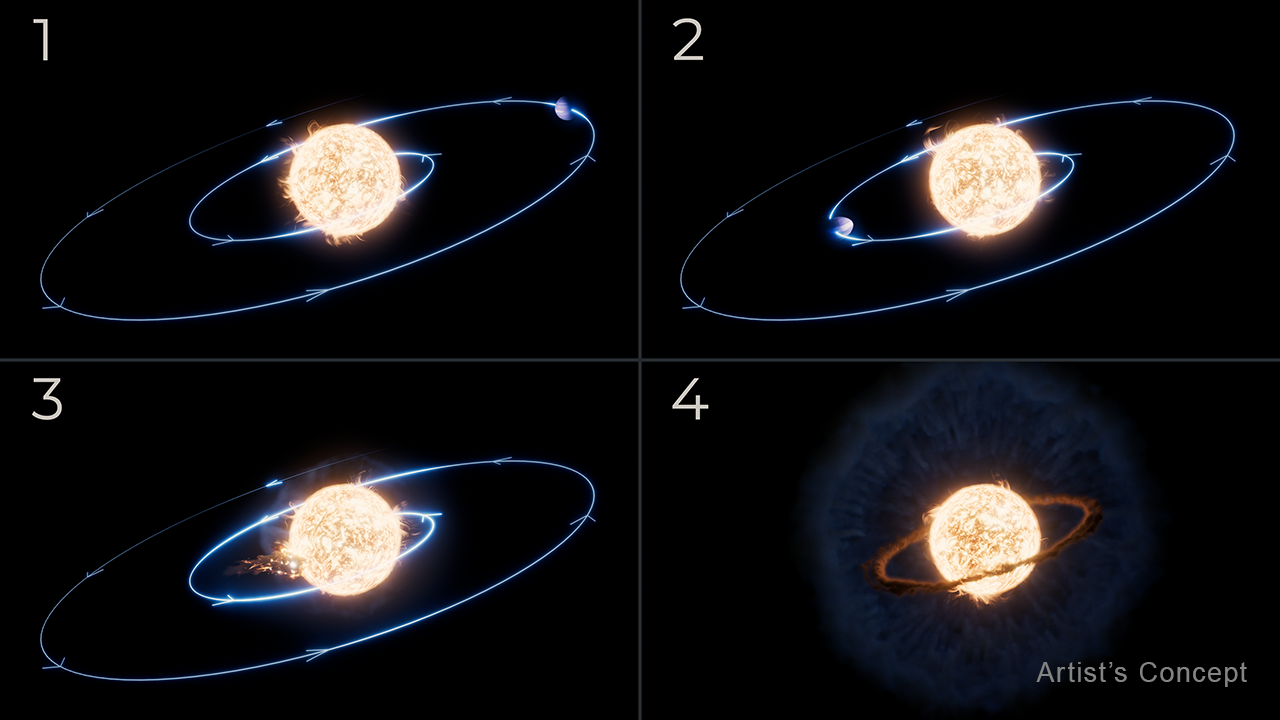For the first time, the James Webb Space Telescope has made it possible to observe the planet being swallowed by a star as a result of the shrinking of its orbit. Despite scientists’ earlier speculations, the mechanisms of the phenomenon could not be confirmed directly until now.
A team of researchers from NSF NOIRLab (National Optical-Infrared Astronomy Research Laboratory) pointed the JWST instruments toward a star about 12,000 light-years distant, suspected of engulfing a planet.
The first signal was a strong flare of light, recorded in 2020 by the Zwicky Transient Facility (ZTF) at Palomar Observatory in California. The object was designated ZTF SLRN-2020. Subsequent analysis of data from the NEOWISE telescope showed that a year before this flare, the star began to glow intensely in the infrared range, indicating the presence of heated dust.
Initially, scientists assumed that the star was entering a red giant phase – typical of Sun-like stars that end their lives by expanding and engulfing nearby planets. More detailed observations with the MIRI (Mid-Infrared Instrument) aboard JWST showed that the planet was orbiting very close to its star. As millions of years passed, its orbit gradually contracted, until eventually the planet began to rub against the outer layers of the star’s atmosphere, after which it began to descend faster and faster toward the center of the star, stretching out and forming a gas and dust structure around it. In the final phase of this process, large amounts of gas began to be ejected from the planet and the outer layers of the star.
The observations were taken under Guaranteed Time Observation program 1240, one of the first Target of Opportunity projects carried out by JWST. The results of the team’s latest research were published in „The Astrophysical Journal”.
Source: National Geographic, NASA JPL






